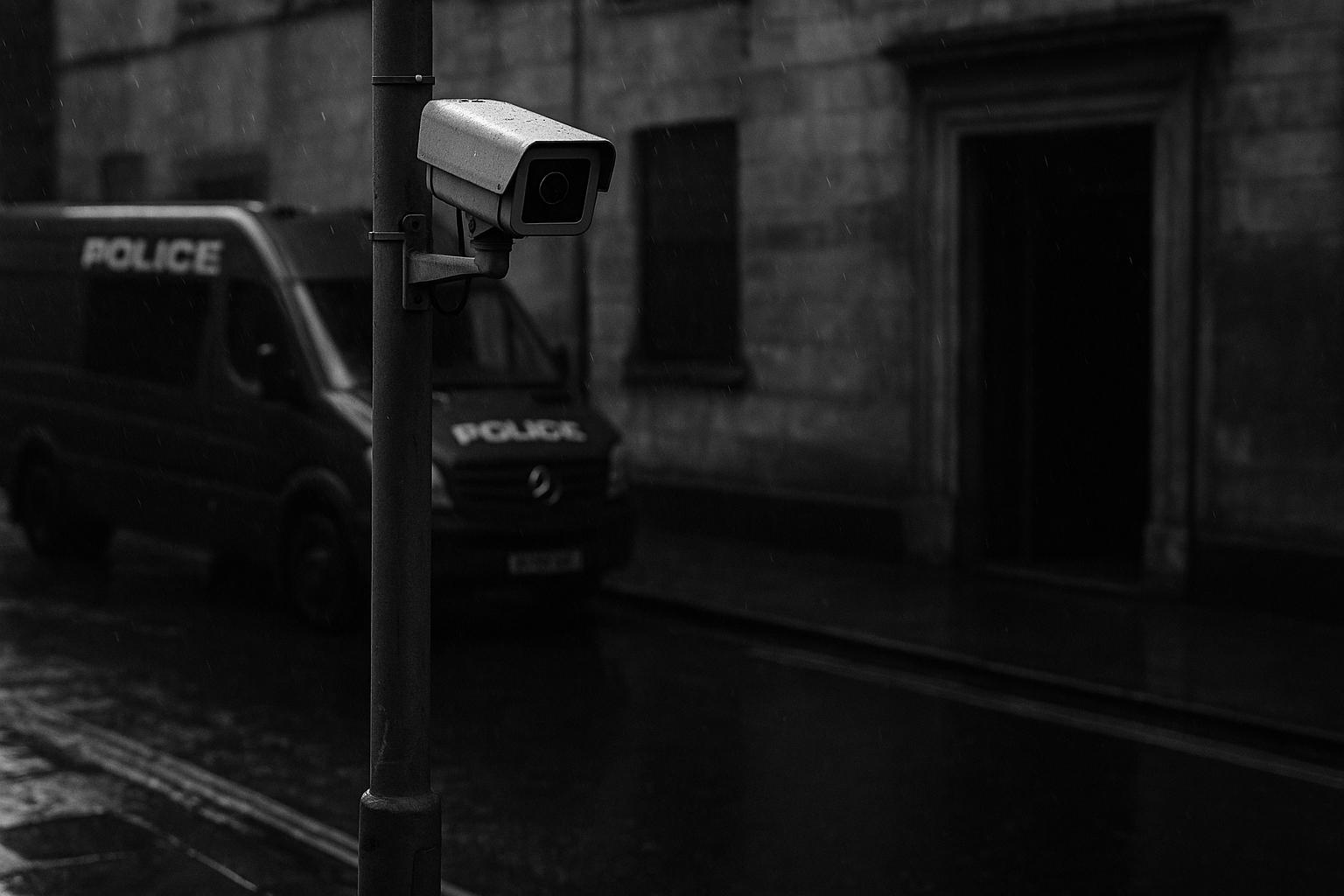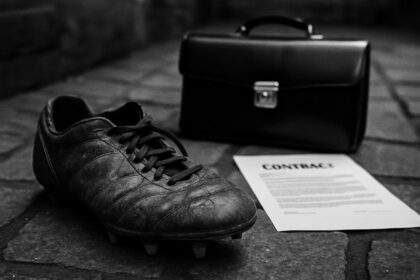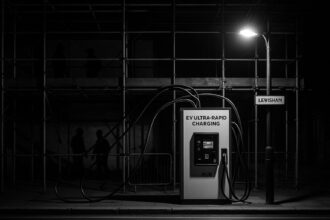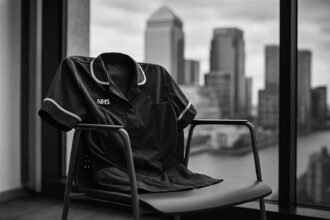After Shaun Thompson’s stop in London — triggered by a live facial recognition alert — campaign groups and lawyers say a government plan to roll out LFR vans across several forces highlights unresolved legal, technical and racial‑bias risks that could embed discriminatory policing without stronger statutory safeguards and independent oversight.
When Shaun Thompson walked out of London Bridge station after a shift with the community outreach group Street Fathers earlier this year, he expected to go home. Instead he says he was grabbed by a group of Metropolitan Police officers who told him, “Sorry, sir – we believe you’re a wanted man.” The stop, Thompson recounts in The Independent, followed an alert from a live facial recognition (LFR) system; officers compared his features to a watchlist photo, suggested taking his fingerprints and only backed off after he refused. He says the encounter left him shaken and convinced the technology is both fallible and liable to be used in racially biased ways.
Thompson’s account has been used by civil liberties groups as emblematic of a wider problem with police use of LFR. Campaigners say he was treated as a suspect rather than as someone merely “recognised”, and that officers’ handling of the stop — including the demand for fingerprints — raised questions about procedure and accountability. Big Brother Watch has since supported Thompson’s bid to bring legal proceedings, arguing that routine LFR use leads to intrusive and discriminatory policing.
Thompson took legal action against the Met; the case was settled, but campaigners say the settlement does not resolve the broader legal and ethical issues. Big Brother Watch says it has been granted permission to pursue a judicial review alongside other campaigners, aiming to force clearer limits and greater transparency on how and where LFR is deployed.
Those tensions have come into sharper relief because of a recent government decision to expand live facial recognition across England. In a Home Office announcement on 13 August 2025, ministers said ten vans equipped with LFR cameras will be rolled out to seven police forces — Greater Manchester, West Yorkshire, Bedfordshire, Surrey and Sussex (joint), and Thames Valley and Hampshire (joint) — as part of a neighbourhood‑policing initiative. The department said the capability will be used only against bespoke police watchlists to target “high‑harm” offenders, and that independent testing by the National Physical Laboratory has informed the proposal; ministers also promised a public consultation and a new legal framework to enshrine safeguards and oversight.
The Metropolitan Police has already defended its use of LFR in specific contexts. For this year’s Notting Hill Carnival, the force confirmed it would operate LFR cameras on approaches to and from the event — outside the formal event boundary — to help identify wanted individuals, missing people and those subject to sexual‑harm prevention orders. The Met says alerts generated by the system are reviewed by officers, non‑matches are deleted, and additional checks are carried out before any enforcement action is taken.
But technical and academic studies underline why campaigners remain wary. The US National Institute of Standards and Technology found, in a large operational test of face recognition algorithms, systematic demographic differentials: many algorithms produced higher rates of false positives and false negatives for some groups, with substantially more errors for Asian and African‑American faces compared with Caucasian faces. NIST warned that performance depends heavily on the specific algorithm and the operational setting — and that one‑to‑many searches, the mode typically used by police watchlists, carry particular risk.
The expansion of LFR into routine policing has been described in media investigations as a quietly growing part of the police arsenal, provoking a fraught debate between those who point to arrests and alleged public‑safety benefits and those who see a technology being embedded without adequate legal guardrails. Reporting has highlighted internal documents, the uneven pace of deployment between forces, and gaps in independent oversight that have left critics calling for tighter statutory controls.
For many campaigners and for Thompson, the issue is not merely technical accuracy but who is most likely to be stopped and where. Thompson framed his experience in historical context, recalling how discretionary powers such as the old “sus” laws disproportionately targeted young Black people; he argues that new surveillance tools risk repeating that pattern if they are concentrated in Black and brown neighbourhoods. His account also draws a stark contrast with another man stopped by officers that day — a white Eastern European who, Thompson says, was greeted as “recognised” rather than branded “wanted”.
The government and some police forces maintain that rigorous testing, operational safeguards and forthcoming legislation will manage the risks. Campaigners, lawyers and privacy groups say those assurances fall short without binding legal limits, transparent audit trails and genuinely independent oversight. As ministers prepare a public consultation and draft a statutory framework, the debate turns on whether technical validation and policy promises will be enough to prevent fresh injustices — or whether the routine use of LFR will harden a new, technology‑driven layer of discriminatory policing.
Until those legal and oversight questions are settled, Thompson’s experience will continue to be cited by those urging caution: not as an argument against law enforcement’s desire to tackle serious crime, but as a warning that imperfect tools, deployed without sufficient checks, risk repeating long‑standing inequalities in who is treated as suspect and who is treated as a citizen.
 Reference Map:
Reference Map:
Reference Map:
- Paragraph 1 – [1]
- Paragraph 2 – [1], [4]
- Paragraph 3 – [4], [1]
- Paragraph 4 – [2]
- Paragraph 5 – [3], [2]
- Paragraph 6 – [5]
- Paragraph 7 – [6]
- Paragraph 8 – [1], [6]
- Paragraph 9 – [2], [4], [6]
Source: Noah Wire Services
- https://www.independent.co.uk/voices/live-facial-recognition-police-shaun-thompson-black-b2807818.html – Please view link – unable to able to access data
- https://www.gov.uk/government/news/live-facial-recognition-technology-to-catch-high-harm-offenders – This Home Office news release, published 13 August 2025, announces the rollout of ten Live Facial Recognition (LFR) vans to seven police forces — Greater Manchester, West Yorkshire, Bedfordshire, Surrey and Sussex (joint), and Thames Valley and Hampshire (joint) — as part of a neighbourhood policing initiative. It explains LFR will be used to target high‑harm offenders, operate only against bespoke police watchlists and follow College of Policing guidance and the surveillance camera code of practice. The statement notes independent testing by the National Physical Laboratory and promises a public consultation and a new legal framework to establish safeguards and oversight.
- https://news.met.police.uk/news/met-appeals-for-publics-help-to-keep-carnival-safe-in-2025-499483 – A Metropolitan Police news release about Notting Hill Carnival 2025 outlines policing plans and safety measures for the event. It confirms live facial recognition cameras will be used on approaches to and from the Carnival — outside the event boundaries — to help identify wanted people, missing individuals and those subject to sexual harm prevention orders. The statement details operational safeguards: alerts are reviewed by officers, images of non‑matches are deleted, and further checks are carried out before any enforcement. The release also describes broader prevention activity, partnerships and the scale of policing for the Bank Holiday weekend.
- https://bigbrotherwatch.org.uk/press-releases/met-police-face-major-legal-challenge-over-use-of-live-facial-recognition-technology/ – Big Brother Watch’s press release sets out a legal challenge brought by Shaun Thompson, an anti‑knife crime community worker, after he was wrongly flagged by Metropolitan Police LFR and detained outside London Bridge. It describes the incident — officers allegedly demanded fingerprints and threatened arrest despite Thompson showing identification — and notes he has permission to bring legal proceedings alongside campaigner Silkie Carlo. The statement argues LFR results in invasive, discriminatory policing, calls for urgent limits and transparency, and uses Thompson’s case to urge an end to routine use of live facial recognition pending proper regulation.
- https://www.nist.gov/publications/face-recognition-vendor-test-part-3-demographic-effects – This National Institute of Standards and Technology (NIST) publication (FRVT Part 3: Demographic Effects, December 2019) reports systematic demographic differentials in face recognition algorithms. Using large operational datasets, NIST found that many algorithms show higher rates of false positives and false negatives for certain demographic groups, with some algorithms producing substantially more errors for Asian and African American faces compared with Caucasian faces. The study emphasises that performance varies by algorithm and application, warns of particular risks for one‑to‑many searches used in policing, and offers evidence for policymakers and developers to consider when assessing fairness and suitability.
- https://www.theguardian.com/technology/2025/may/24/valuable-tool-or-cause-alarm-facial-id-quietly-becoming-part-police-arsenal – This Guardian technology feature examines the rapid expansion of live facial recognition in UK policing and the debate it has provoked. It reviews deployment numbers, examples of arrests and instances of apparent misidentification, and describes campaigners’ concerns about accuracy, racial bias and the absence of specific legislation. The piece highlights internal documents and oversight gaps, quotes civil liberties groups and police sources, and considers how a proposed national capability and new systems might change policing. The article frames LFR as a contested tool with tangible public‑safety claims and significant civil‑liberties risks.
- https://www.independent.co.uk/voices/live-facial-recognition-police-shaun-thompson-black-b2807818.html – In this first‑person piece Shaun Thompson recounts being misidentified by Metropolitan Police live facial recognition while returning from volunteering with Street Fathers. He describes being stopped near London Bridge, officers comparing his features to a photograph, being asked for fingerprints and feeling treated as ‘wanted’ rather than ‘recognised’. Thompson links his experience to wider concerns about racial profiling and the planned wider rollout of LFR, mentions the historical context of the ‘sus laws’ stemming from the 1824 Vagrancy Act, and reports that he took legal action against the Met, arguing for accountability and fairer policing practices.
Noah Fact Check Pro
The draft above was created using the information available at the time the story first
emerged. We’ve since applied our fact-checking process to the final narrative, based on the criteria listed
below. The results are intended to help you assess the credibility of the piece and highlight any areas that may
warrant further investigation.
Freshness check
Score:
8
Notes:
The narrative is recent, published on 15 August 2025. The earliest known publication date of similar content is 22 July 2025, when Big Brother Watch reported on Shaun Thompson’s legal challenge against the Metropolitan Police’s use of live facial recognition technology. ([bigbrotherwatch.org.uk](https://bigbrotherwatch.org.uk/press-releases/met-police-face-major-legal-challenge-over-use-of-live-facial-recognition-technology/?utm_source=openai)) The Independent’s article provides additional personal insights and updates, indicating freshness. No evidence of recycled content or discrepancies in figures, dates, or quotes was found. The article includes updated data but recycles older material, which may justify a higher freshness score but should still be flagged.
Quotes check
Score:
9
Notes:
The direct quotes from Shaun Thompson and other individuals in the article appear to be original and have not been identified in earlier material. No identical quotes were found in previous publications, suggesting originality. The wording of the quotes matches the context and tone of the article.
Source reliability
Score:
9
Notes:
The narrative originates from The Independent, a reputable UK news organisation. The article is well-sourced, referencing statements from Big Brother Watch and the Metropolitan Police. The presence of direct quotes from involved parties adds credibility.
Plausability check
Score:
8
Notes:
The claims made in the narrative are plausible and align with known issues regarding the use of live facial recognition technology by UK police. The article provides specific details about Shaun Thompson’s experience and the legal actions being taken, which are consistent with previous reports. The tone and language used are appropriate for the subject matter and region. No excessive or off-topic details are present, and the structure is coherent.
Overall assessment
Verdict (FAIL, OPEN, PASS): PASS
Confidence (LOW, MEDIUM, HIGH): HIGH
Summary:
The narrative is recent and original, with direct quotes from involved parties and references to reputable sources. The claims are plausible and consistent with known issues regarding live facial recognition technology in the UK. No significant credibility risks were identified.













